Ficha Técnica de los autores de los seminarios (2021 - 2022)
Samuel Deleplanque
CV: Samuel Deleplanque holds a master’s degree from the ISIMA (a French engineering school of Clermont-Ferrand, France) and received his PhD in 2014 in computer science from the University of Auvergne, France, where he has also served one year as graduate assistant. His thesis focuses on transportation and production systems optimization (implementation of both approximate and exact methods). Then he worked as a postdoctoral researcher for three years at the Université Libre de Bruxelles, Belgium, and for 2 years at the IFSTTAR laboratory (French Institute of Science and Technology for Transport, Development and Networks), from the University of Lille. Since 2019, he is associate professor of Optimization at the Department of Acoustic of the JUNIA-ISEN engineering school in the Catholic University of Lille where his two main research topics are optimization of the acoustic stealth and discreteness of underwater vehicles and quantum computing for solving optimization problems.
Abstract: The great period of research on quantum mechanics is from 1900 to the 1920s with the development of the standard model of particle physics. The first quantum revolution brings significant changes in our day-to-day lives with many major inventions like transistors, lasers, etc. In the 1970s and 1980s, researchers such as Richard Feynman started to ask if computer science could be used for studying quantum physics. Finally, from this question, a new research topic emerged for designing systems based on quantum mechanics. It is the beginning of the second quantum revolution and quantum computing.
After a short overview of the «quantum» hardware, we will see how the quantum computing world is split into two paradigms: the universal gates-based systems (IBM, Google etc.) and the quantum annealing-based systems (D-Wave) with a focus on the latter since the related technology can be especially applied today on optimization problems. For these machines, we will see how quadratic unconstrained binary optimization problems (QUBO) fit as input of these machines since these problems are mathematically equivalent of the Ising problems well known by physicians and «hardwarely» solved by the process of quantum annealing. We will enlarge the set of problems solvable with hybrid machines (i.e., quantum and classical) with the use of lagrangian relaxation of all the constraints.

Claudia Archetti
CV: Since September 2021, Claudia Archetti is Full Professor in Operations Research at ESSEC Business School in Paris. She was previously Associate Professor at the University of Brescia. She teaches courses for undergraduate, master and PhD students in OR and logistics. The main areas of the scientific activity are: models and algorithms for vehicle routing problems; mixed integer mathematical programming models for the minimization of the sum of inventory and transportation costs in logistic networks; exact and heuristic algorithms for supply-chain management; reoptimization of combinatorial optimization problems.
Claudia Archetti has carried out the scientific activity in collaboration with Italian and foreign colleagues and published joint papers with some of the best researchers at the international level.
She is author of more than 80 papers in international journals. She was Area Editor of Computers and Operations Research. She is Associate Editor of Omega, Transportation Science, Networks, TOP and EURO Journal of Computational Optimization and member of the Editorial Board of European Journal of Operational Research. Claudia Archetti is VIP3 of EURO, the Association of European Operational Research Societies, in charge of publications and communication.
Abstract: We introduce a new class of Pickup and Delivery problems on circles (or rings). These problems arise in the field of public transportation systems where autonomous (i.e. driverless) vehicles travel on circular networks. We consider a set of stations arranged in a circle and a set of transportation requests. Each request asks for the transportation of a certain quantity from a pickup station to a delivery station. A fleet of capacitated vehicles is available at the depot. We propose a classification scheme for these problems. Then, we first address the variants in which the vehicles are allowed to move in a single direction of the circle (either clockwise or counterclockwise). Afterwaurds, we move to the case in which the vehicle can move in both directions. We provide a complexity analysis for these classes of problems. We develop polynomial time algorithms for the variants that are polynomially solvable and proofs of NP-hardness for the variants that are NP-hard. In addition, for the latter, we provide mathematical formulations and perform computational tests that show the effectiveness of these formulations. Finally, we compare optimal solutions with those obtained using a straightforward greedy algorithm.
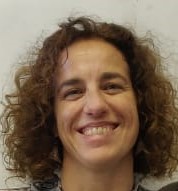
Hatice Çalık
CV: Dr. Hatice Çalık is a senior researcher at the CODeS research group in Numerical Analysis and Applied Mathematics unit within KU Leuven’s Department of Computer Science. She received her PhD in 2013 from the Department of Industrial Engineering at Bilkent University. Prior to KU Leuven, she worked as a postdoctoral researcher in several international Operations Research labs in Montreal, Brussels and Nancy. Her research interests include mathematical modeling-based exact optimization methods, network location and routing problems.
Abstract: The focus of this talk is on a problem that requires location of recharging stations and routing of electric vehicles in a goods distribution system. The goods are disseminated from a depot and distributed to the customers via electric vehicles with limited freight capacity. Differently from the classical vehicle routing problem, the vehicles have battery restrictions and need recharging at some stations if a trip is longer than their range. The problem reduces to finding the optimal locations of the recharging stations and their number to minimize the total cost, which includes the routing cost, the recharging cost, and the fixed costs of opening stations and operating vehicles. We propose a novel mathematical formulation and an efficient Benders decomposition algorithm embedded into a two-phase general framework to solve this environmental logistics problem. Phase I solves a restricted problem to provide an upper bound for the original problem which is later solved in Phase II. Between the two phases, an intermediate processing procedure is introduced to reduce the computations of the Phase II problem. This is achieved by a combination of the Phase I upper bound and several lower bounds obtained via exploiting the underlying network structure. Our approach solves the problem in a general setting with non-identical stations and vehicles by allowing multiple visits to the stations and partial recharging. The computational study provides both managerial and methodological insights.

Mercedes Pelegrín
CV: Mercedes Pelegrín García is a postdoctoral researcher at the Laboratoire d’Informatique of the École Polytechnique (LIX). She graduated in the double degree in Mathematics and Computer Engineering at the University of Murcia. In 2019, she received her Ph.D. in Operational Research at the same university, with the thesis entitled “Set packing, location, and related problems”. Mercedes is now working within the “Integrated Urban Mobility” Chaire at the École Polytechnique, where she studies optimization problems related to the use of electric vertical take-off and landing aircraft in future cities. The research interests of Mercedes include varied topics within Combinatorial Optimization, Location Science, and (Mixed) Integer Programming, along with real-world applications.
Abstract: Urban Air Mobility (UAM) has the potential to revolutionize transportation. This emerging paradigm will exploit the third dimension to smooth ground traffic in densely populated areas. Such ambitious purpose will be possible thanks to new developing technology, including electric vertical take-off and landing aircraft. In this context, Mathematical Optimization can help in both making long-term strategic decisions, and supporting short-term or even online decision-making processes. This talk will explore two optimization problems arising in this domain, which are key to ensure safety and maximize airspace capacity.

Begoña Vitoriano
CV: Begoña Vitoriano is Associate Professor at the Department of Statistics and Operational Research and the Interdisciplinary Mathematics Institute of Complutense University of Madrid. PhD in Mathematics, she has been a university lecturer since 1990. Begoña has been involved in research projects all along her career, especially in knowledge and technology transferring, leading projects since 1995. Begoña is the head of the UCM research group in Decision Aid Models for Logistics and Disaster Management and the working group on Disasters, Development and Sustainability of the Spanish Society of Statistics and Operations Research (SEIO). Currently, she is Associate Editor of OR Spectrum and Elected President of SEIO. Besides she has got a big experience in Cooperation for Development, leading projects since 1995. Her research area is Operational Research, in particular, stochastic optimisation and Multicriteria Decision Making, mostly focused on decision aid models for logistics in several sectors (power systems, transport, disaster management…) and sustainable development.
Abstract: Disaster risk reduction is a complex task involving important efforts to prevent and mitigate the consequences of disasters. Many countries around the world have experienced devastating wildfires in recent decades, and risk reduction strategies are now more important than ever. Landscape modifications focused on changes in the vegetable fuel load are common activities for prevention and mitigation, avoiding ignitions, spreading fires and facilitating access for response teams. Two approaches will be shown in this presentation. One of them focuses on reducing contiguous areas of high fuel load through prescribed burning. A mathematical programming model is proposed for scheduling prescribed burns on treatment units on a landscape over a planning horizon. The model takes into account the uncertainty related to the conditions to carry out the scheduled prescribed burns, as well as several criteria related to the safety and quality of the habitat. This multiobjective stochastic problem is modelled from a risk aversion perspective, based on the methodology introduced in Leon et al. (2020). The model is applied to a real case study in Andalusia (Spain), Sierra de los Filabres. The other is a probability-based approach for firebreaks location or fuel management solved with Bayesian networks. Scenarios are also considered, in this case for wind directions, to obtain acyclic directed graphs to be solved with the Bayesian networks algorithms. Although it is not an optimisation model, it can be used to compare the effect of different strategies on the wildfire risk (objective function). This approach is also applied to the Sierra de los Filabres case study.
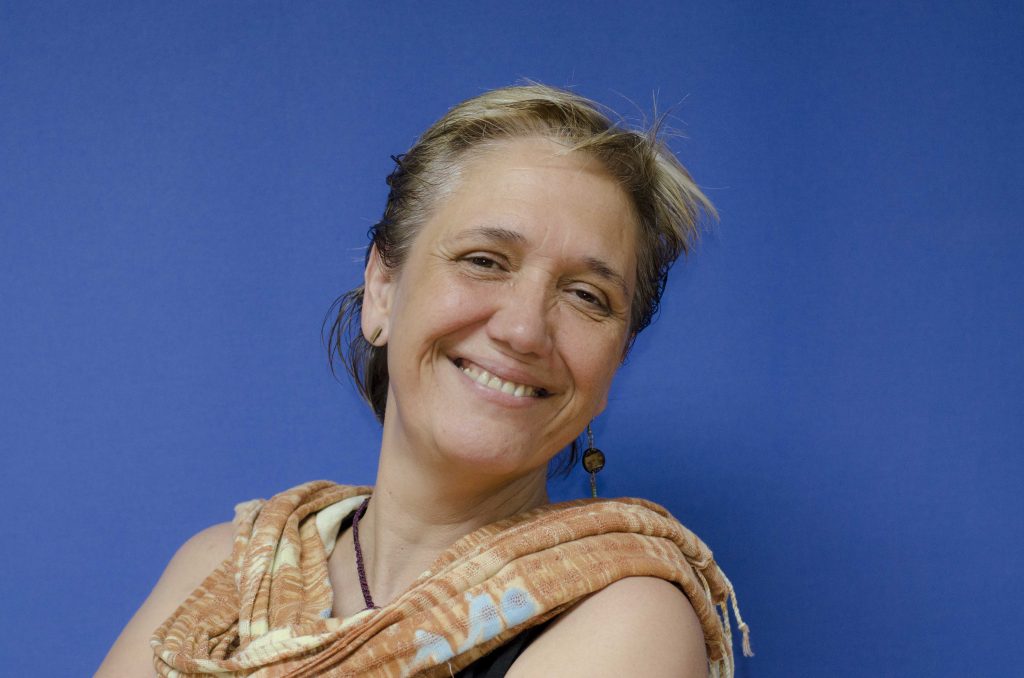
Francesco Cesarone
CV: Francesco Cesarone received a Master’s degree in Physics and a Ph.D. degree in Mathematics for Finance from Sapienza University of Rome. He initially worked as a researcher in the field of climatology at CNR, then as a PostDoc in Finance at Sapienza University of Rome, and as a consultant for ARPM (New York, US). Since 2011 he is an Assistant Professor of Computational Finance and Financial Modeling at the Department of Business Studies of Roma Tre University. His research interests currently include portfolio selection problems, risk management, risk modeling, and optimal risk decisions, enhanced indexation problems, algorithms for large scale linear, quadratic integer and mixed-integer programming problems, heuristic optimization. He serves as a referee for several scientific journals. From 1 November 2021, he will be promoted to Associate Professor.
Abstract: In this seminar we present some recent and new approaches for risk diversification and their application to the problem of portfolio selection.
We first discuss, in the case of volatility, the Risk Parity approach, which requires equal risk contributions of all factors. Then we propose an alternative strategy, Equal Risk Bounding, that has the weaker requirement of an equal upper bound on the risk contribution of all factors. We show that Equal Risk Bounding actually coincides with the minimum risk Risk Parity on a subset of factors. We then extend the Risk Parity strategy to any subadditive and positively homogeneous risk measures such as (CVaR, CVaR-Deviation, Expectiles, etc.). Furthermore, we provide some empirical evidence showing that the Risk Parity model for portfolio selection is always the most stable one w.r.t. estimation errors of the input parameters compared with several optimization-based portfolio selection models.
Finally, we propose a new approach that tries to join the benefits of the optimization and of the diversification approaches by choosing the portfolio that is best diversified (e.g., Equally Weighted or Risk Parity) on a subset of assets of the market, and that optimizes an appropriate risk, or utility, or performance measure among all portfolios of this type.
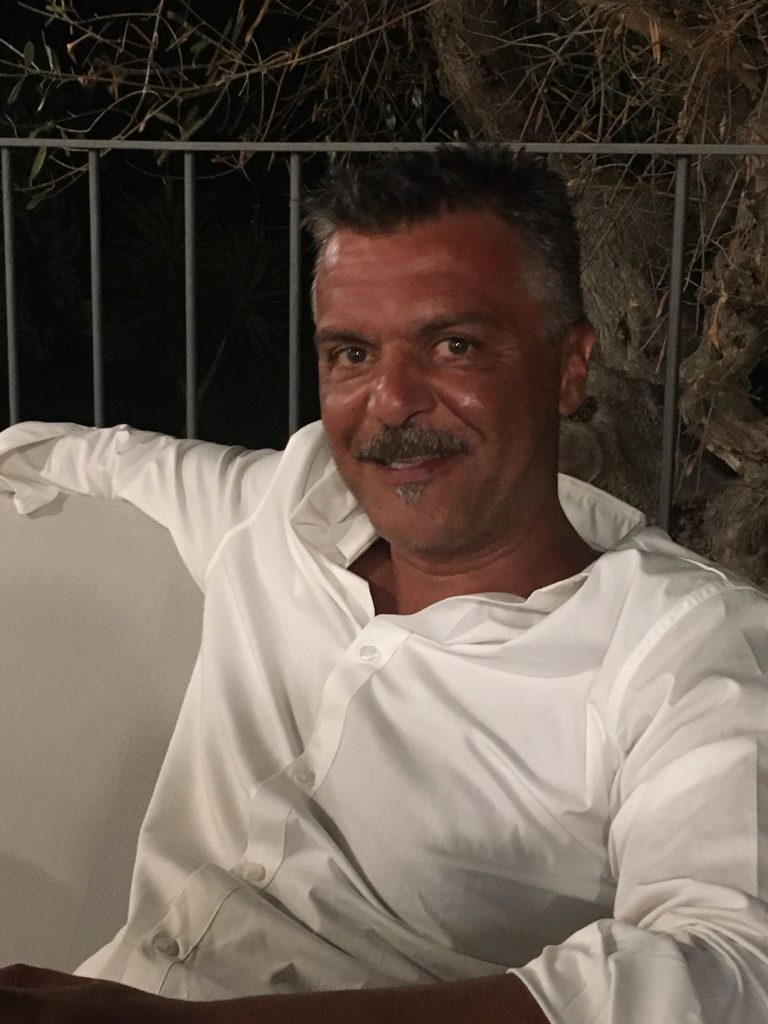
Mercedes Landete
CV: Mercedes Landete is Professor of Statistics and Operations Research at the Center of Operations Research of the University Miguel Hernández of Elche (Spain). Her research interests focus on the study and solution of combinatorial optimization problems, mainly of combinatorial optimization mixed-integer problems. She is particularly interested in mixed-integer combinatorial problems in facility location, routing and rankings.
Abstract: Cooperation among agents is a relevant issue in location and routing recent models. Users in a location model may cooperate in a location model for saving costs in such a way that facilities send the commodity to a subset of users to whom the rest of customers move for picking up their demand. Facilities may cooperate transferring capacity from the ones with an excess of to the ones with a lack of it. A two-echelon routing problem in which a vehicle based at a depot picks up or delivers freight to some customers (first echelon) to whom the remaining customers travel for picking up or delivering (second echelon) can also be seen as a pickup and delivery model with customer cooperation. Also the concept of close-enough in the context of facility location can be seen as a facility location with agent cooperation.

Francisco Saldanha
CV: Francisco Saldanha da Gama is professor of Operations Research in the Department of Statistics and Operations Research at the Faculty of Science, University of Lisbon, where he received his PhD in 2002. He has taught undergraduate and post-graduate courses focusing on Operations Research, Mathematical Programming, Discrete Optimization, Stochastic Optimization, and Logistics. His research interests include stochastic mixed-integer optimization, location theory and project scheduling.
Abstract: Districting Problems aim at partitioning a set of basic Territorial Units (TUs), into a set of larger clusters, called districts. This is done according to several planning criteria such as balancing, contiguity and compactness. These problems have a wide range of applications that include political districting, strategic service planning and management, school systems, energy and power distribution networks, design of police districts, waste collection, transportation, design of commercial areas to assign sales forces, and distribution logistics. In this seminar, a family of stochastic districting problems is discussed. Demand is assumed to be represented by a random vector with a given joint CDF. A two-stage mixed-integer stochastic programming model is proposed. The first stage comprises the decision about the initial territory design. In the second stage—after demand becomes known—balancing requirements are to be met. This is ensured by means of two recourse actions: outsourcing and reassignment of TUs. The objective function accounts for the total expected cost. A first model is presented that is later extended to account for aspects of practical relevance. Computational results are discussed using real geographical data.
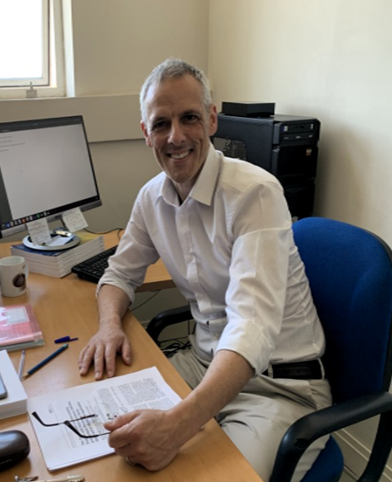
Eva Vallada
CV: Eva Vallada Regalado es Doctora Ingeniera Informática y Profesora Titular de Universidad del Departamento de Estadística e Investigación Operativa Aplicadas y Calidad (DEIOAC) de la Universitat Politècnica de València (UPV). Desarrolla su actividad investigadora en el grupo de Sistemas de Optimización Aplicada adscrito al Instituto Tecnológico de Informática de la UPV, principalmente en el desarrollo de algoritmos para problemas de optimización en problemas de producción, logística portuaria y gestión de vehículos de emergencia sanitaria. También es Directora Académica del Título de Administración y Dirección de Empresas de la UPV (Campus de Valencia) y Directora Académica del Máster en Ingeniería de Análisis de Datos, Mejora de Procesos y Toma de Decisiones del DEIOAC.
Abstract: El principal objetivo de los Servicios de Emergencias Sanitarias prehospitalarias es proporcionar una atención médica en el menor tiempo posible para evitar la muerte y/o disminuir las secuelas de un trauma. Es esencial ubicar estratégicamente las bases de los vehículos de emergencias, pero aun en el caso de contar con la ubicación óptima de los mismos, a medida que estos se mueven para atender emergencias, algunas zonas podrían quedarse sin cobertura, siendo difícil mantener un nivel de servicio adecuado. Con un mayor número de vehículos se podría resolver este problema, pero es una opción costosa y poco eficiente. Una solución alternativa es reubicar los vehículos disponibles para alcanzar la mayor cobertura posible. En este trabajo se aborda el problema de reubicación dinámica de ambulancias en tiempo real mediante el diseño y desarrollo de herramientas heurísticas. Se resuelve el caso real del Servicio de Emergencias Sanitarias de la provincia de Valencia.
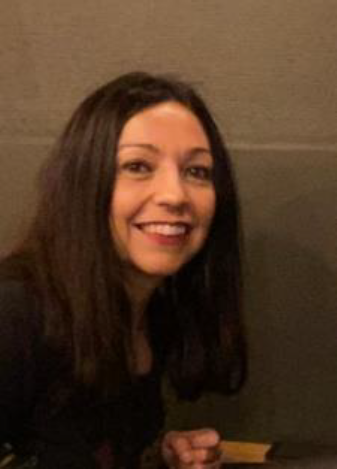
María Fulgencia Villa
CV: Mª Fulgencia Villa es licenciada en Ciencias Económicas y Empresariales y en Ciencias y Técnicas Estadísticas, ambas por la Universitat de València i Estudi General (UVEG) y doctora por la misma universidad. Actualmente es Profesora Titular de Universidad del Departamento de Estadística e Investigación Operativa Aplicadas y Calidad (DEIOAC) de la Universitat Politècnica de València (UPV) e investigadora del grupo Sistemas de Optimización Aplicada adscrito al Instituto Tecnológico de Informática de la UPV. Ha trabajado en la optimización de problemas de gestión de proyectos con recursos limitados y en distintos problemas de optimización logística en terminales portuarias, secuenciación de la producción y gestión de vehículos de emergencias sanitarias. Ha colaborado con el grupo de investigación CODeS Research Group de la Faculteit Industriele Ingenieurswetens-chappen, KAHO SINT-LIEVEN (Bélgica) en problemas reales de secuenciación en almacenes automatizados.
Abstract: El principal objetivo de los Servicios de Emergencias Sanitarias prehospitalarias es proporcionar una atención médica en el menor tiempo posible para evitar la muerte y/o disminuir las secuelas de un trauma. Es esencial ubicar estratégicamente las bases de los vehículos de emergencias, pero aun en el caso de contar con la ubicación óptima de los mismos, a medida que estos se mueven para atender emergencias, algunas zonas podrían quedarse sin cobertura, siendo difícil mantener un nivel de servicio adecuado. Con un mayor número de vehículos se podría resolver este problema, pero es una opción costosa y poco eficiente. Una solución alternativa es reubicar los vehículos disponibles para alcanzar la mayor cobertura posible. En este trabajo se aborda el problema de reubicación dinámica de ambulancias en tiempo real mediante el diseño y desarrollo de herramientas heurísticas. Se resuelve el caso real del Servicio de Emergencias Sanitarias de la provincia de Valencia.

Ramón Álvarez-Valdéz Olaguíbel
CV: Ramón Alvarez-Valdés is full Professor in the Department of Statistics and Operations Research of the Faculty of Mathematics at the University of Valencia. Director of the Department of Statistics and Operations Research in the period 1999-2005 and Director of the Master in Business Process Planning and Management in the period 2008-2016. Coordinator of the Planning and Logistics Group (GPL), dedicated to research and applications in Optimization problems. One of the main areas of work of the group are two-dimensional material cutting problems and three-dimensional container and truck loading problems, including combined loading and routing problems. On these topics he has authored a number of papers in international journals and has been Principal Investigator of several research projects.
Abstract: The two-dimensional glass cutting problem to be solved by Saint Gobain, one of the world’s largest producers of flat glass, includes some specific constraints that prevent the direct application of procedures developed for the standard cutting problem. On the one hand, the sheets to be cut have defects that made them unique and must be used in a specific order. On the other hand, the pieces are grouped in stacks and the pieces in each stack must be cut in order. There are also some additional characteristics due to the technology used, especially the requirement for a three-staged guillotine cutting process.
We have developed heuristic and exact procedures. First, we have developed a beam search algorithm, using a tree structure in which at each level the partial solution is augmented by adding some new elements until a complete solution was built. We developed a randomized constructive algorithm for building these new elements and explored several alternatives for the local and the global evaluation. An improvement procedure, specifically designed for the problem, was also added. The computational study, using the datasets provided by the company, shows the efficiency of the proposed algorithm for short and long running times.
We have also approached the problem by developing and solving integer linear models. We start with basic models, which include the essential features of the problem, as a classical 3-stage cutting problem. Then, we progressively add new conditions to consider the order in the stacks, the minimum waste produced by guillotine cuts, and the possibility of trimming for some specific items. Finally, we add the conditions of the defects in the sheets. We propose the first integer linear model capable to work with trimming and defects. The results show that in most cases the optimal solution can be obtained for small problems considering all the constraints of the real problem.

Martine Labbé
CV: Martine Labbé is honorary professor at the Université Libre de Bruxelles (ULB). From 1999 to 2019 she was Professor of Operations Research at the Computer Science Department of the Faculty of Sciences. Her main research area is discrete optimization, including graph theory and integer programming problems and with a particular emphasis on location and network design problems. She is also specialised in bilevel programming and studies pricing problems and Stackelberg games.
She serves or has served on the editorial boards of Discrete Optimization, International Transactions in Operational Research, Journal on Combinatorial Optimization, Journal of Optimization Theory and Applications, Operations Research, Operations Research Letters and Transportation Science. She was the Editor in Chief of the EURO Journal on Computational Optimization from 2012 to 2020.
She is the author or coauthor more than140 papers published in international journals.
In 2007-2008, she was president of EURO, the Association of European Operational Research Societies. She was, in 2014 and 2015, Vice-Chair of the SIAM Activity Group on Optimization (SIAG/OPT).
In June 2019 she was awarded the EURO Gold Medal.
Abstract: Stackelberg Games confront contenders with opposed objectives, each wanting to optimize their rewards. Decision-making parties involve a party with the capacity of committing to a given action or strategy, referred to as the leader, and a party responding to the leader’s action, called the follower. The objective of the game is for the leader to commit to a reward-maximizing strategy anticipating that the follower will best respond.
Finding the optimal mixed strategy of the leader in a Stackelberg Game is NP-hard when the leader faces one out of several followers and polynomial when there exists a single follower. Additionally, games in which the strategies of the leader consist in covering a subset of at most K targets and the strategies of the followers consist in attacking some target are called Stackelberg Security Games and involve an exponential number of pure strategies for the leader.
A Stackelberg game can be modeled as a bilevel bilinear optimization problem which can be reformulated as a single level mixed integer nonlinear program (MINLP). We present different reformulations of this MINLP and compare their LP relaxations from both theoretical and computational points of view. Finally we propose some special cuts to strengthen the weakest formulation, leading to an efficient solution approach.

A. Marín
CV: Alfredo Marín es licenciado en Matemáticas por la Universidad de Granada y doctor por la de Murcia, en cuyo Departamento de E. e Investigación Operativa trabaja actualmente como catedrático. Sus trabajos se inscriben en el campo de la Optimización Discreta, con especial atención a los problemas de Localización. Durante este semestre lleva a cabo una estancia de investigación en el IMUS.
Abstract: Dada una matriz cuadrada (n,m) de números reales, el problema del p-centro consiste en elegir p columnas de forma que sea mínimo el máximo de los mínimos sobre las p columnas de los valores de la matriz. Si n=m y la matriz viene dada por las distancias entre n puntos del plano, se trata de elegir p puntos llamados centros de forma que sea mínima la máxima distancia de los puntos al conjunto de centros. El problema ha sido formulado de diversas formas como problema de Optimización Discreta. En la charla analizaremos en profundidad por vez primera estas formulaciones que, a veces, no son lo que parecen.

Yulia Karpova Krylova
CV: Yulia Karpova Krylova es licenciada en Administración y Dirección de Empresas (Universitat de València i Estudi General) y tiene Máster Universitario en Ingeniería de Análisis de Datos, Mejora de Procesos y Toma de Decisiones (Universitat Politècnica de València). Actualmente está trabajando como profesora asociada en la Universitat Politècnica de València y está desarrollando su Tesis Doctoral en Estadística y Optimización en el seno del Grupo Sistemas de Optimización Aplicada adscrito al Instituto Tecnológico de Informática de la UPV, cuyas directoras son María Fulgencia Villa Juliá y Eva Vallada Regalado y cuyo tema es Algoritmos heurísticos para problemas reales de reubicación dinámica de vehículos de emergencias sanitarias.
Abstract: El principal objetivo de los Servicios de Emergencias Sanitarias prehospitalarias es proporcionar una atención médica en el menor tiempo posible para evitar la muerte y/o disminuir las secuelas de un trauma. Es esencial ubicar estratégicamente las bases de los vehículos de emergencias, pero aun en el caso de contar con la ubicación óptima de los mismos, a medida que estos se mueven para atender emergencias, algunas zonas podrían quedarse sin cobertura, siendo difícil mantener un nivel de servicio adecuado. Con un mayor número de vehículos se podría resolver este problema, pero es una opción costosa y poco eficiente. Una solución alternativa es reubicar los vehículos disponibles para alcanzar la mayor cobertura posible. En este trabajo se aborda el problema de reubicación dinámica de ambulancias en tiempo real mediante el diseño y desarrollo de herramientas heurísticas. Se resuelve el caso real del Servicio de Emergencias Sanitarias de la provincia de Valencia.
